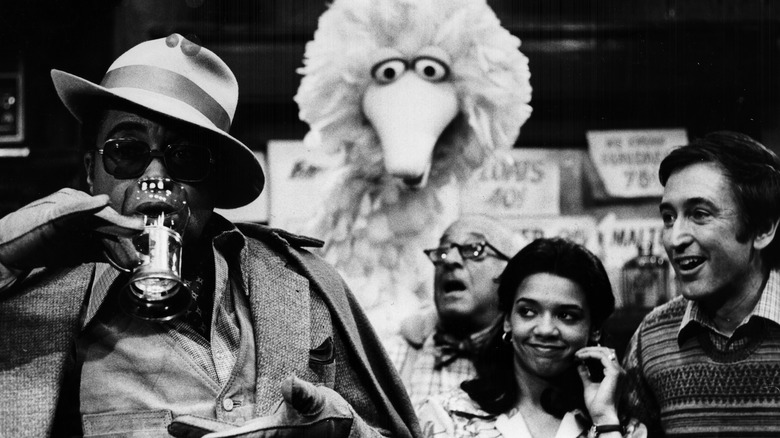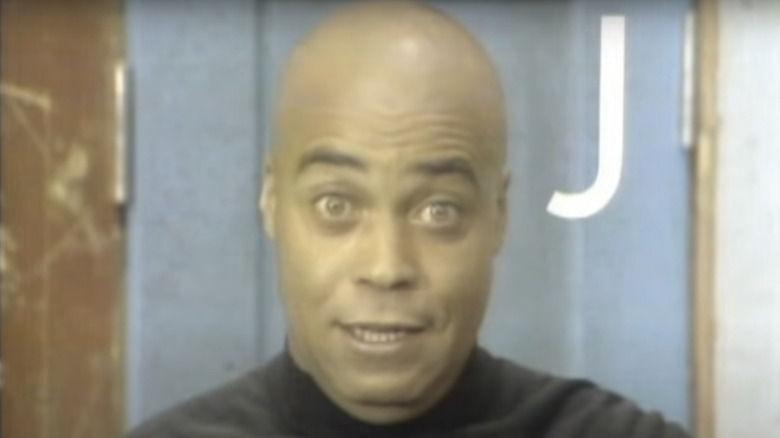The legendary James Earl Jones has left the mortal plane, leaving behind an unfillable ocean of talent and a legacy spanning over half a century. He will, of course, be remembered for his iconic roles in films like “Star Wars,” “The Lion King,” and “The Sandlot,” but the honorary EGOT recipient, star of stage and screen, and namesake of Broadway’s James Earl Jones Theatre (formerly known as the Cort Theatre) also holds a distinction that no other performer in history will ever be able to match — and it took place where the air is sweet, down on Sesame Street.
“Sesame Street” first launched in 1969, with the long-running educational children’s television series combining live-action, sketch comedy, animation, and puppetry. It was the brainchild of Joan Ganz Cooney, Lloyd Morrisett, and Jon Stone, with the iconic non-human characters lovingly crafted and performed by Jim Henson’s Muppets. One of the original four human characters on the show was Will Lee’s Mr. Hooper, a role he played until his passing in 1982. Before he joined “Sesame Street,” though, the decorated performer taught at the American Theatre Wing for nine years, and James Earl Jones was one of his acting students.
This connection nabbed Jones a spot on the “Sesame Street” pilots, which were actually filmed on the show’s set, unlike Carol Burnett’s segments (which were shot separately and inserted into the show after the fact). This makes Jones the first celebrity to ever pay a visit to the literal Sesame Street, and his memorable appearance helped a generation learn their alphabet and count to 10.
The James Earl Jones effect
The videos of James Earl Jones reciting the alphabet and counting to 10 circulate around the internet pretty often, because he speaks with such precision, dramatic pacing, and exaggerated enunciation that unless you’re a small child also learning your ABCs, it appears a little uncanny. In fact, it’s a testament to Jones’ own history with speech pathology. He famously learned to overcome a stutter he endured as a child, so the deliberate movement of his mouth to properly dictate the letters and numbers made Jones the perfect person to model correct mouth placement for children learning for the first time.
The pauses allow children to fully process each letter or number before moving on to what comes next and the letter flashing on screen before Jones speaks gives children the chance to beat him to the punch on repeat viewings. This pedagogical method was dubbed “The James Earl Jones effect” in Dr. Gerald S. Lesser’s book, “Children and Television: Lessons from ‘Sesame Street,'” and served as proof that “Sesame Street” encouraged interactive learning beyond just passive viewing.
Jones would return to “Sesame Street” nearly a decade later as himself, the movie star, in search of an old-fashioned egg cream. He paid a visit to Mr. Hooper’s shop in Episode 1148, a reunion of sorts for this acting student and his old teacher, just a year after providing the voice of Darth Vader. Jones also hosted the 10th-anniversary “Sesame Street” special, “A Walking Tour of Sesame Street” the following year, and returned again in 2004, taping a “My Favorite Sesame Street Moments” intro ahead of season 35. Hilariously, Jones is also famous for telling actor Matt Robinson, who originated the role of Gordon, he loved “Sesame Street,” but that “This Muppet business has got to go, kids will be terrified.” Hey, no one’s perfect!
Rest in peace, James Earl Jones. May the old-fashioned egg cream be bountiful on the other side.









